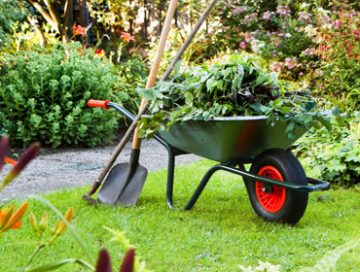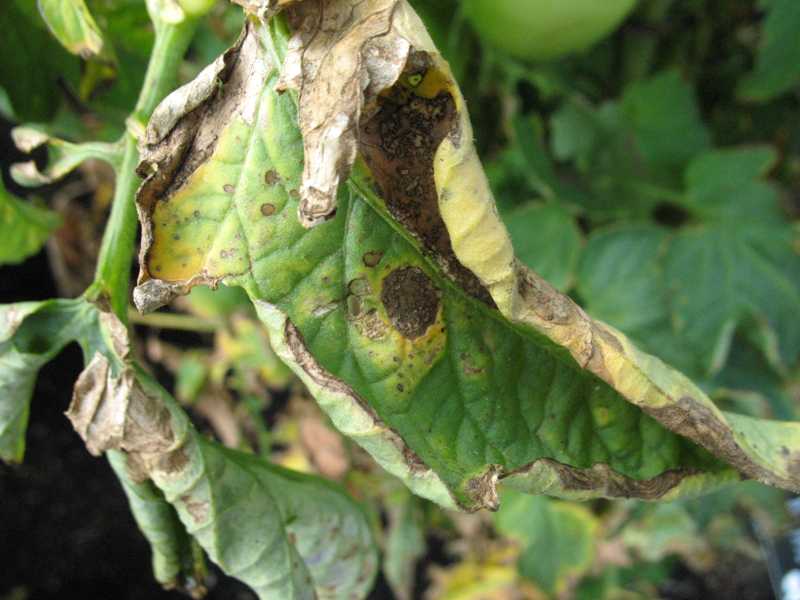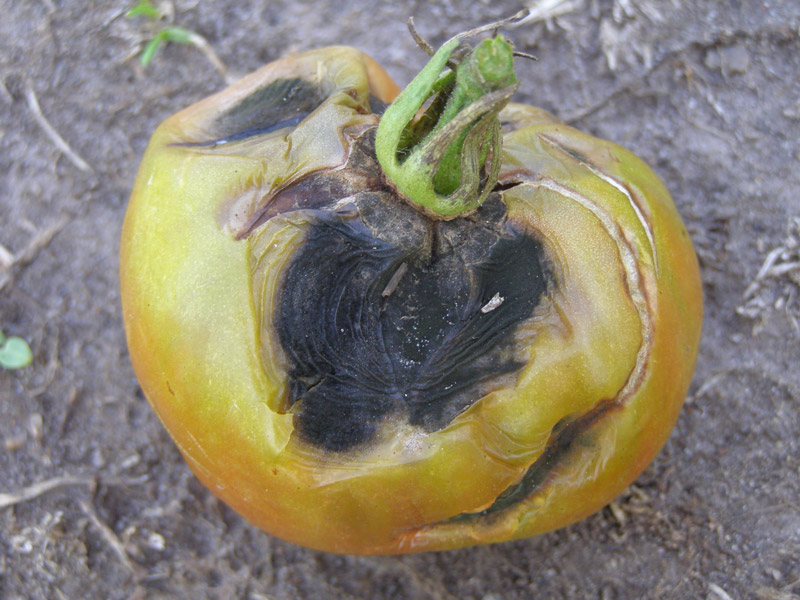It’s that time of the year again when we are anticipating on eating all the great vegetables from our gardens! Here is a bit of info that will hopefully help you to avoid that awful Tomato Blight so you get to enjoy those ripe delicious tomatoes!
One thing to remember is that once you have late tomato blight there is not a whole lot you can do to save your tomatoes. The best advice is to use methods to prevent the blight from occurring.
It is critical that gardeners understand that late blight is not like other tomato and potato diseases. Many other diseases affect these crops in home gardens, but most of them only affect leaves or cause limited damage to the crop, and while they may reduce the harvest, they generally don’t cause a total loss. Early blight can be treated by removing the infected leaves and by spraying with copper or sulfur. Importantly, you can harvest the fruit from tomatoes with early blight (so long as they look healthy).
Using tomato plants that have been grown to be disease resistant is a good place to start.
Cleanup – Since early blight can survive over winter on plant debris it is essential to clean up all plant residues at the end of the previous season. If blight is present it can be spread by splashing water, insects and tools, so ensure to disinfect your pruning shears and try not to work in your garden when things are wet, as blight loves hot humid conditions! 
Rotate Crops – if you do have an outbreak of blight, find somewhere else to plant your tomatoes the next year, even if it is just in containers. Try not to plant your tomatoes near potatoes as they can carry/transfer downy mildew or blight.
 Prune and stake your plants to improve air circulation. This is very important for prevention. Remove the bottom branches especially if they are in contact with the soil. Planting your tomatoes in a raised bed will also improve drainage and prevent diseases from spreading.
Prune and stake your plants to improve air circulation. This is very important for prevention. Remove the bottom branches especially if they are in contact with the soil. Planting your tomatoes in a raised bed will also improve drainage and prevent diseases from spreading.
Mulch – Keep the soil under plants clean and free of garden debris. Adding a layer of mulch will help prevent any spores from reaching the vegetation.
Water the soil and not the plant, avoid overhead watering to keep the leaves from too much moisture – this will help prevent splashing spores from one plant to another.
Identify: Tomato blight is a disease caused by a fungus like organism that starts in the stem and can spread rapidly into the leaves and fruit, becoming more pronounced after wet or humid periods. Spots will begin to appear and then turn into dark areas that look like bulls eye rings. As the disease matures it spreads outward to the leaves, turning them yellow, and causing them to wither and die. This can cause decay of the plant especially those that are in poor health.
Precautions:
There are chemical products available to control early blight, such as a copper sulphate solution, which you would use to help prevent blight from setting in as the plant is growing. This remedy is not always readily available for consumers and can cause skin and eye irritation. If using copper sulphate to prevent blight, instructions should be carefully followed.
Best Recommendations
Late blight is caused by a different fungus. If you discover late blight on a tomato plant in your garden, it is highly recommended that you immediately remove the infected plant and dispose of it (place it in a garbage bag). Never put plants with blight in your compost pile that you will be using in other areas of your garden (even if it’s for the next year). This is a very important step in preventing the blight from spreading or returning the next season. Once your plant has blight there is not much you can do to save it – it is better to completely get rid of it!
Hope these tips help you to grow some healthy tomotoes!

